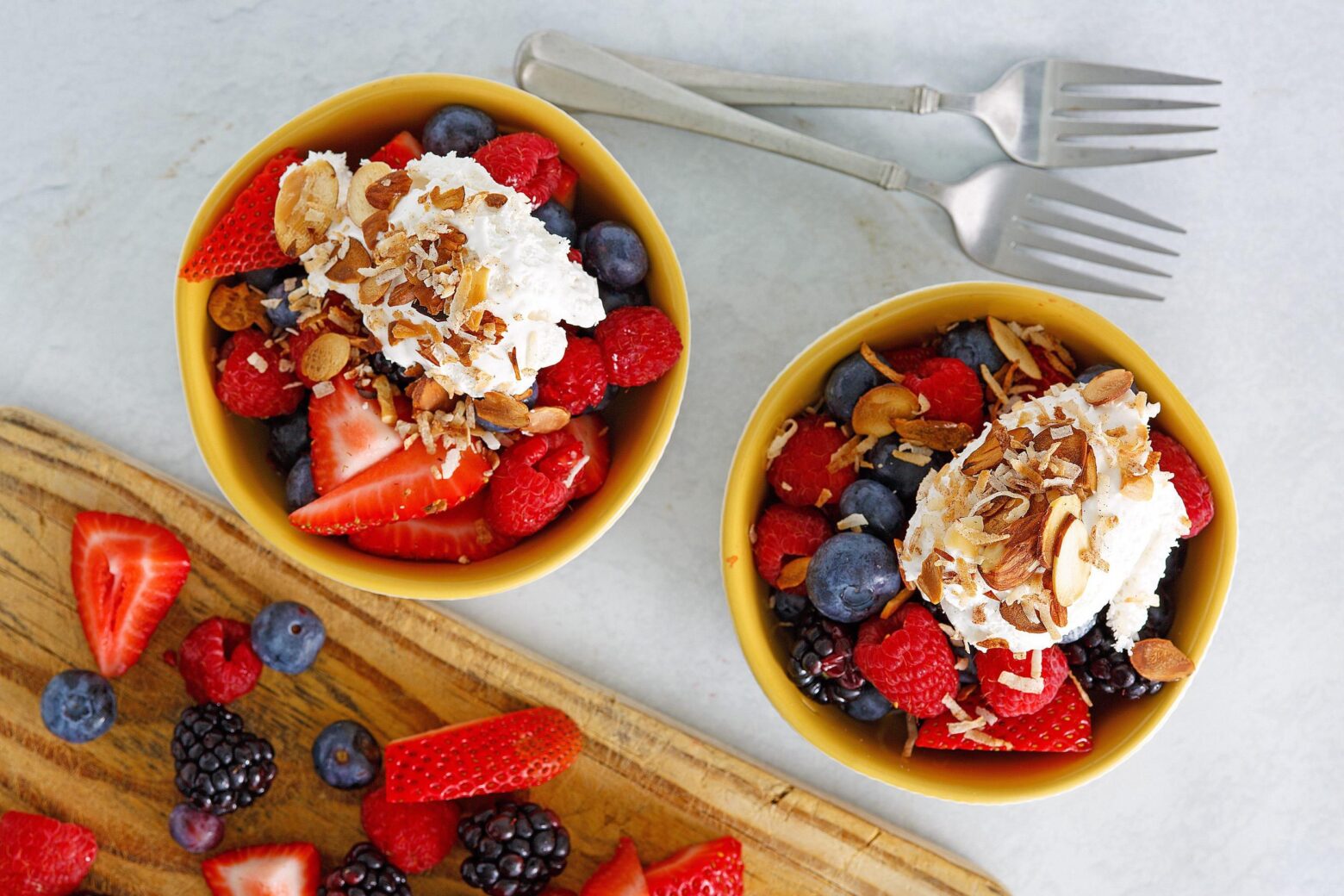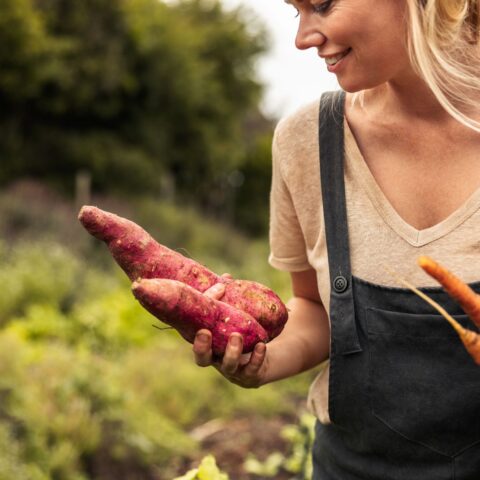Ancestral Foods for Antioxidant Health

At one point or another we’ve probably all wondered how to increase the antioxidants in our diet. Fortunately, The Paleo Diet is an important and easy way to maintain antioxidant health. But before we explain how, it’s important to know why.
Free radicals are highly unstable and reactive molecules with an unpaired electron. While they aren’t inherently “bad”, a chronic excess can lead to oxidative stress which damages your body including your DNA, your cellular membranes and worsens chronic disease progressions.
Poor health or diet, lacking regular movement in your life, or regular exposure to air pollutants or industrial chemicals then can all tip the scales toward free radical excess.
Diet is a critical way to restore balance.
One of the many reasons an ancestral approach to eating is fantastic for promoting health is that it significantly reduces or even eliminates simple sugars and omega-6 rich vegetable seed oils. Both are major causes of free radical damage in the body.1,2 Limiting the foods you consume that cause free radical damage is an important first step.
Next, you need to add more antioxidant rich-foods to your nutritional arsenal. The good news is, a Paleo diet is the perfect platform for boosting your antioxidant intake and ensuring you meet your daily needs. Let’s take a closer look at five foods that are ancestral antioxidant powerhouses:
Cold-Water Fatty Fish
Fish contains an array of natural compounds that contribute to antioxidant defenses; carotenoids, amino acids and nutrients like ubuiquinones (i.e. CoQ10).3 To maximize your benefit, include fish like salmon, trout, mackerel, halibut, herring regularly in your diet, as well as seafood like oysters, mussels, scallops and shrimp.
Blueberries
All berries are a great sources of antioxidants, but blueberries (especially wild blueberries) are the heavyweight champions. They contain the greatest ORAC (oxygen radical absorbance capacity) of all fruits and vegetables, no easy feat.4 Blueberries get their color from a group of flavonoids called anthocyanins, thought to be major drivers behind the antioxidant benefits of blueberries.5 They’re quick and easy to eat, making them a great “on the go” snack. Alternately, try them frozen as dessert option after dinner.
Avocados
Avocados are one of my favorite Paleo foods to recommend to clients because they pack a fantastic healthy fat and fiber punch, while also being a great source of both water-soluble antioxidants like vitamin C and fat-soluble antioxidants like vitamin E and K. Avocados are also rich in the antioxidants lutein and zeaxanthine that protect your eyes from macular degeneration.6 These benefits combined with the phenomenal anti-inflammatory and blood sugar balancing effects of the monounsaturated fat (MUFA) oleic acid found in this nutritious fruit should make it an absolute staple in your diet.7,8
Grass-Fed & Wild-Game Meats
Today, the overwhelming majority of red meat consumed by the general public is grain-fed and mass-produced, whereas we’ve evolved over the last 200,000 years around meat from animals that ate natural grass. The implication on the nutrient-density and antioxidant levels of ancestral meats is profound. Grass-fed beef contains significantly greater amounts of conjugated linoleic acid (CLA) that protects lipids from peroxidation and acts as a precursor to vitamins A, E and glutathione – all robust antioxidants in the body.9,10 Boost your antioxidant intake by adding more grass-fed beef to your nutritional arsenal, as well as wild game meats like bison, venison, elk, and boar.
Dark Chocolate (70% or More)
Pound for pound, cacao found in dark chocolate is almost as potent as blueberries when it comes to antioxidant power.11 Its ORAC score is impressively at the top of the list and it also may be beneficial for blood pressure, protecting against LDL cholesterol oxidation, and reducing risk of cardiovascular disease.12,13 Granted dark chocolate isn’t a Paleo food, but that’s why we say 85 percent and as far as cheat foods go, it has its positives.
Should I Supplement with Antioxidants?
Exercise promotes the build-up of free radicals much like the exhaust from your car when you drive. The old way of thinking was to try and quench these free radicals via supplementation to enhance training adaptations. Unfortunately, this wasn’t the case. Studies reviewing the use of antioxidant supplements after exercise showed that they actually blunted the positive effects on training adaptations. It turned out that reactive oxygen species (ROS) mediated several key post-exercise physiological processes and antioxidants interfered with those processes14.
That’s right, too many antioxidants suppress the build-up of free radicals which are actually essential for triggering the positive muscular adaptations from training.
The good news is, if you follow an ancestral approach to eating you don’t have to worry about the antioxidants in your food. The blunting effect on your training gains only occurs from supplementation (the supra-physiological doses are higher than you could eat from food.)
Bring the focus back to your diet to boost your health and antioxidant intake. A Paleo diet is a great foundation for removing free radical causing foods like sugars and processed omega-6 vegetable oils, as well as providing a plentiful buffet of high antioxidant foods to fuel your health and performance.
References
[1] Jaiswal, N., et al. (2015). Fructose-induced ROS generation impairs glucose utilization in L6 skeletal muscle cells. Free Radical Research, 49(9). Retrieved from //www.ncbi.nlm.nih.gov/pubmed/25968943
[2] Jenkinson, AM, et al. (Dec 1999). The effect of increased intakes of polyunsaturated fatty acids and vitamin E on DNA damage in human lymphocytes. FASEB Journal, 13(15). Retrieved from //www.ncbi.nlm.nih.gov/pubmed/10593860
[3] Hossein J., Ali A. A Review on Natural Antioxidants in Fish: Stabilizing Effect on Sensitive Nutrients Middle-East J. Sci. Res., 7 (2): 170-174, 2011.
[4] Prior R et al. Analysis of botanicals and dietary supplements for antioxidant capacity: a review. J AOAC Int. 2000 Jul-Aug;83(4):950-6.
[5] Rodriguez-Mateos A. Procyanidin, anthocyanin, and chlorogenic acid contents of highbush and lowbush blueberries. J Agric Food Chem. 2012 Jun 13;60(23):5772-8.
[6] Delcourt C et al. Plasma Lutein and Zeaxanthin and Other Carotenoids as Modifiable Risk Factors for Age-Related Maculopathy and Cataract: The POLA Study. Investigative Ophthalmology & Visual Science June 2006, Vol.47, 2329-2335.
[7] Basu A et al. Dietary Factors That Promote or Retard Inflammation. Arteriosclerosis, Thrombosis, and Vascular Biology. 2006; 26: 995-1001
[8] Bermudez, B et al. Clustering effects of postprandial insulin secretion and sensitivity in response to meals with different fatty acid compositions. Food Funct., 2014,5, 1374-1380.
[9] Palacios A et al. Antioxidant effect of conjugated linoleic acid and vitamin A during non enzymatic lipid peroxidation of rat liver microsomes and mitochondria. Mol Cell Biochem. 2003 Aug;250(1-2):107-13.
[10] Daley, C. A., Abbott, A., Doyle, P. S., Nader, G. A., & Larson, S. (2010). A review of fatty acid profiles and antioxidant content in grass-fed and grain-fed beef.Nutrition Journal Nutr J,9(1), 10.
[11] Crozier J et al. Cacao seeds are a “Super Fruit”: A comparative analysis of various fruit powders and products. Chemistry Central Journal20115:5.
[12] Buijsse B et al. Cocoa intake, blood pressure, and cardiovascular mortality: the Zutphen Elderly Study. Arch Intern Med. 2006 Feb 27;166(4):411-7.
[13] Wan Y et al. Effects of cocoa powder and dark chocolate on LDL oxidative susceptibility and prostaglandin concentrations in humans. Am J Clin Nutr. 2001 Nov;74(5):596-602.
[14] Peternelj T, Coombes J. Antioxidant supplementation during exercise training: beneficial or detrimental? Sports Med. 2011 Dec 1;41(12):1043-69.




